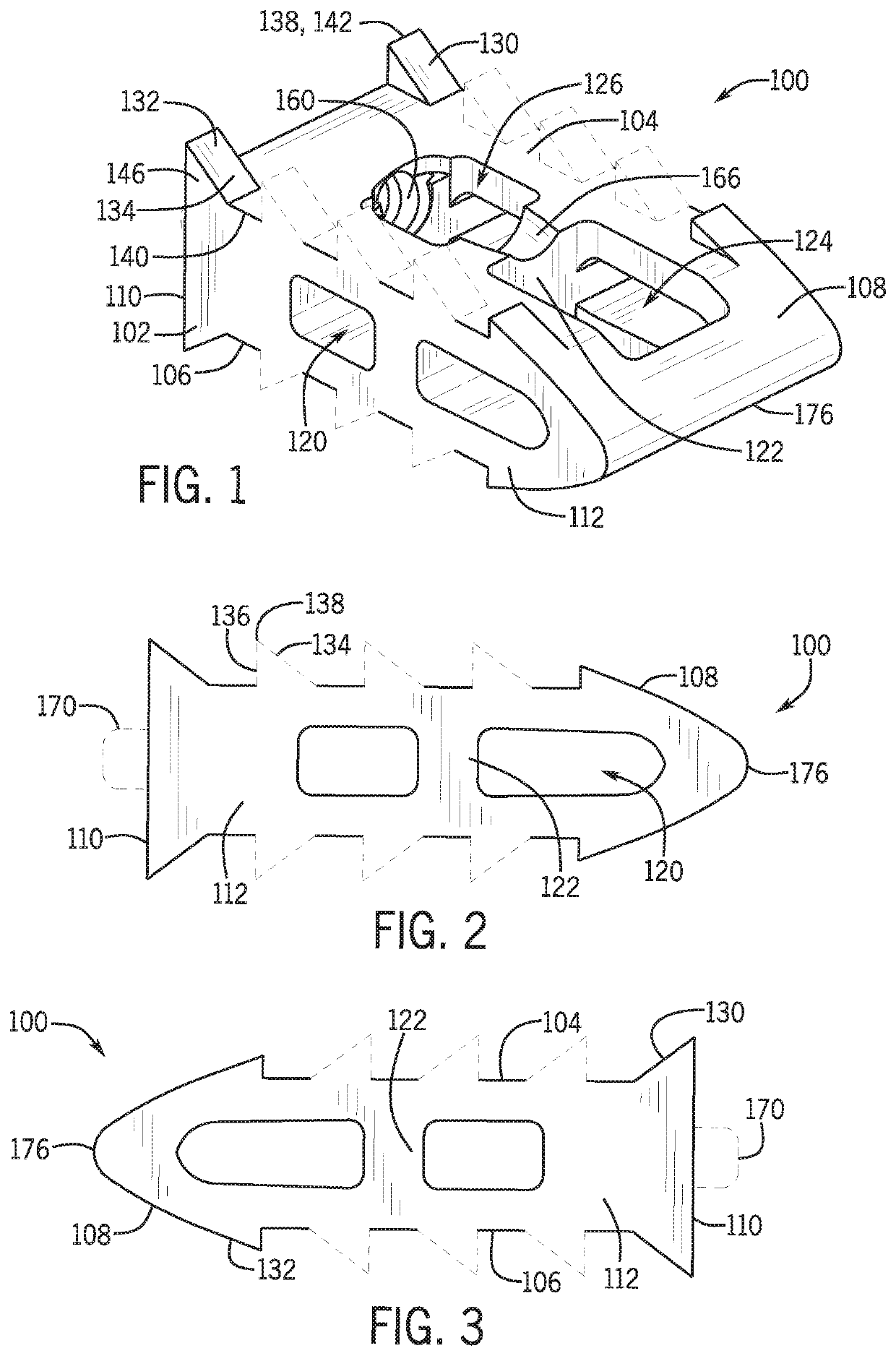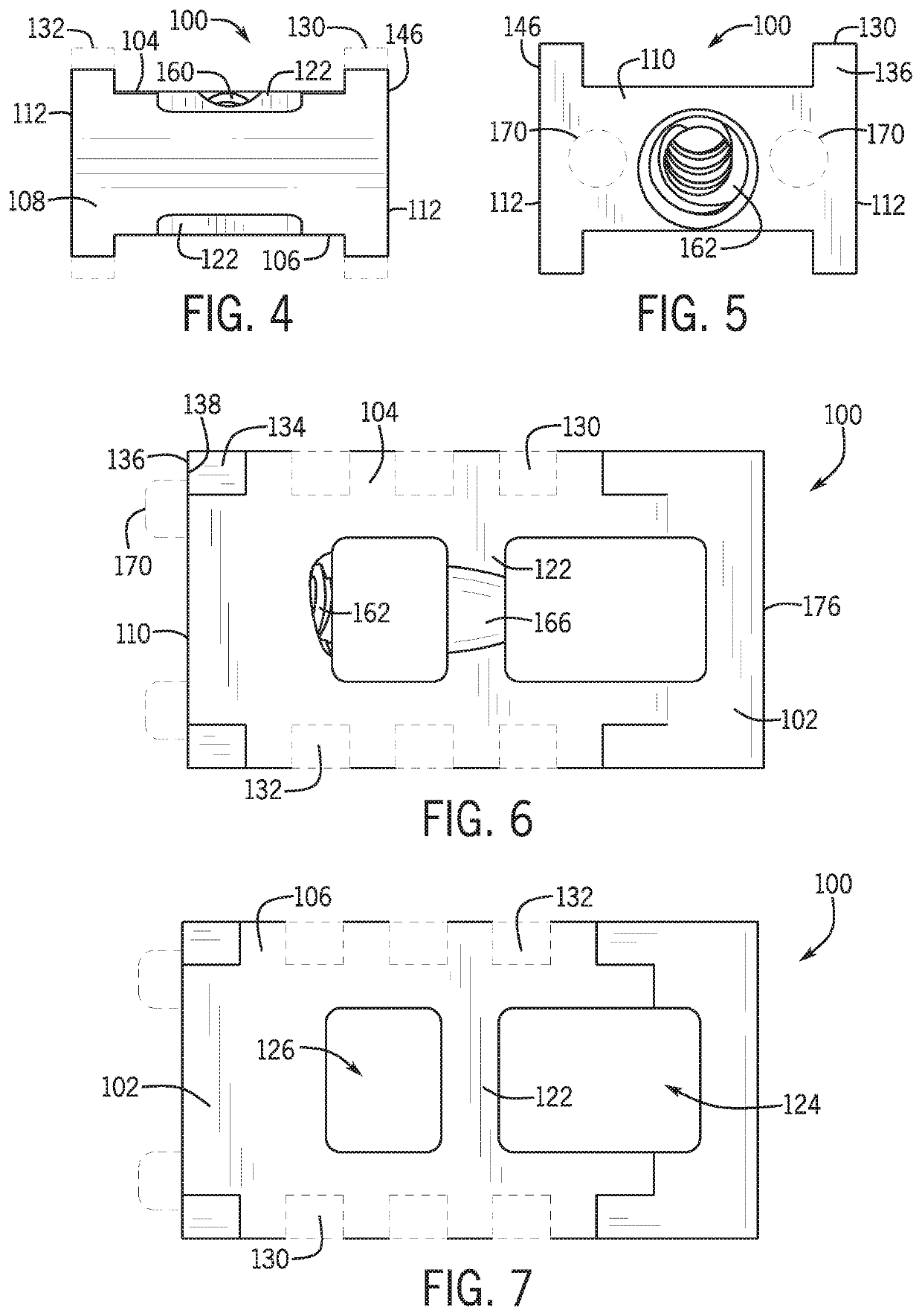Spinal implant and methods of using the same
a technology of spinal fusion and implant, applied in the field of spinal distraction, can solve the problems of pain and disability of a large segment of the population, difficult recovery and rehabilitation, and a number of risks, so as to promote fusion, prevent implant motion, and promote new bone growth and fusion
- Summary
- Abstract
- Description
- Claims
- Application Information
AI Technical Summary
Benefits of technology
Problems solved by technology
Method used
Image
Examples
Embodiment Construction
[0145]Aspects of the present disclosure generally involve devices and methods for treating spinal stenosis, or the narrowing of one or more areas of the intervertebral joint space between two adjacent vertebrae. This narrowing can put pressure on the spinal cord or the nerves that branch out from the narrowed area, thus causing pain, tingling, numbness and / or weakness. As such, in one aspect, a spinal implant device is provided to remedy this condition by, for example, distracting and maintaining the distracted position of the affected spinal facet joint. For instance, the implant may be inserted and secured within the spinal facet joint to forcibly separate adjacent vertebrae. This approach may allow for maintaining the distraction of the joint, thereby relieving symptoms associated with spinal stenosis.
[0146]Some embodiments described herein are related to an implant device and system for use in spinal joint fusion procedures. Generally, the implant is used in spinal fusions perfo...
PUM
 Login to View More
Login to View More Abstract
Description
Claims
Application Information
 Login to View More
Login to View More - R&D
- Intellectual Property
- Life Sciences
- Materials
- Tech Scout
- Unparalleled Data Quality
- Higher Quality Content
- 60% Fewer Hallucinations
Browse by: Latest US Patents, China's latest patents, Technical Efficacy Thesaurus, Application Domain, Technology Topic, Popular Technical Reports.
© 2025 PatSnap. All rights reserved.Legal|Privacy policy|Modern Slavery Act Transparency Statement|Sitemap|About US| Contact US: help@patsnap.com



